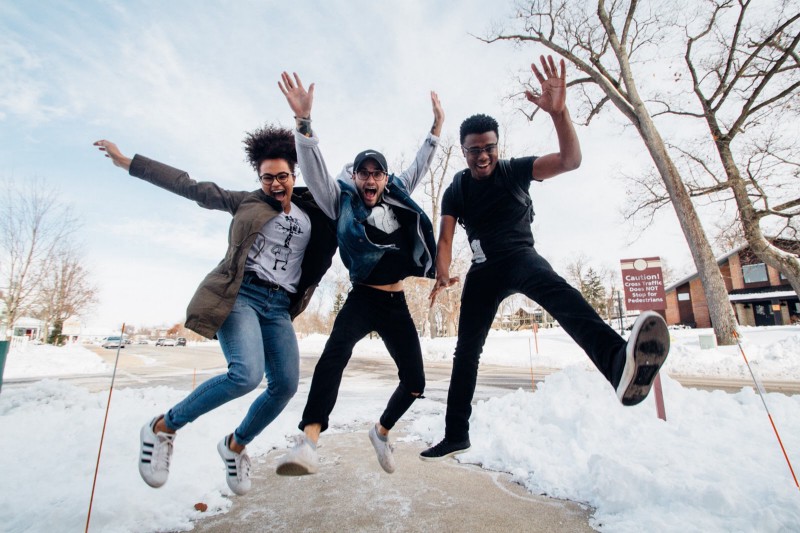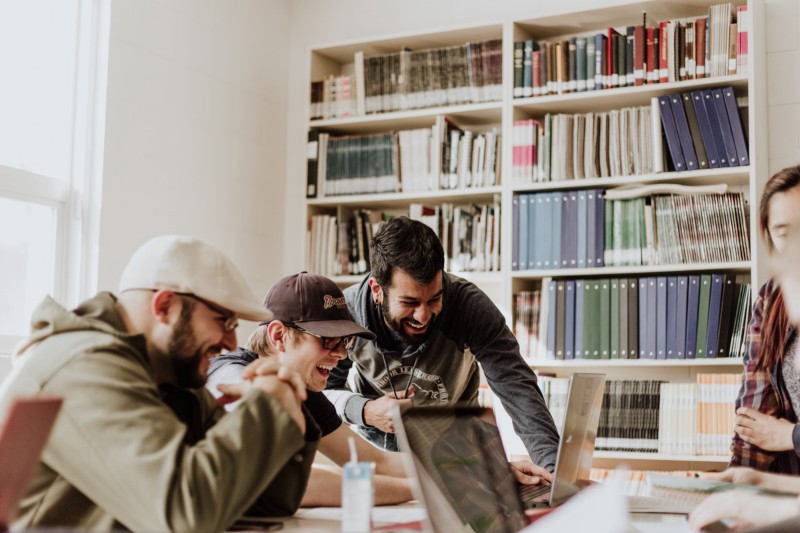Everyone, everywhere, who has ever done group work at school often says one of three things:
- “I hate group work.”
- “I always end up doing everything.”
- “My group never listens to me.”
We are all familiar with the dreadful backlash that ensues after assigning group project work. Very rarely do students stand up, high-five each other and shout, “I love group work!” when assigned. Now, with all the hype around project-based learning, design-thinking and maker pedagogies it is more important than ever to get this group project thing right. It’s time we convert the project haters once and for all by making group projects not suck.

Collaboration prepares students for a host of skills increasingly needed in the professional world. We often say “collaboration is key” but never offer strategies or insight into what makes collaboration effective. Effective collaboration amongst teens requires scaffolding within a supportive learning culture. But how do we create that culture to avoid the Lord of the Flies effects?
Given the current climate of the 21st century workplace, “the ability to simultaneously perform as an individual and together with your colleagues in teamwork is key to attaining growth and success.” Effective collaboration helps students tackle complex problems, give and receive critical feedback, and challenge assumptions from multiple perspectives.
It’s time to re-think how we design and assign group project work. Here are five easy rules to get you started.

Rule #1: Let students assign the roles
Students are uninspired from the start when receiving an assigned role they had no say in deciding. Give students additional time at the start to select their own roles within their group. Next, guide students on how to think through what roles are required and how best to decide on a role that suits them. Consider giving different students opportunities for leadership, and encouraging introverts to understand how to work with extraverts, and vice versa. When empowered to select a position best suited to showcase their inherent skills, students develop their own voice and responsibilities in relation to their peers.
Rule #2: Make all progress visible
Oftentimes it is difficult to trust that students are actually working when in groups because there is no visible way to follow group progress. By making taskboards visible there is a level of individual accountability that group members share. While it might otherwise be easy to sit in the back and benefit from the hard work of others, making progress visible makes freeloaders liable for their inaction.
Rule #3: Teacher as project advisor
While it is tempting to sit back at your desk and grade the countless essays that have piled up, project time is exactly when you should ignore your workload. Free-up your time so you can lap the room to serve as a project mentor or advisor. Let students bounce ideas off of you and model the interpersonal skills they need to work with their peers. By providing constructive feedback, you are helping to model and reinforce the same behaviors you expect students to acquire.
Rule #4: Group share final product
Sure, having one student share the final product saves time, but having the whole group present offers opportunities for convergent thinking and performance. By sharing, it is easy to identify how each group decided to best scaffold their project management. Much is gained when we pool our human capacity and learn from the mistakes and successes of others. Most importantly, having every voice represented allows students to present from the perspective of their unique role in the project.
Rule #5: Get feedback on group dynamics
Often we hear that students hate group work, but we don’t know why. With ongoing project reflection, we can track students who didn’t feel heard, and help guide them toward a better role in the future. By building in checkpoints and retrospective exercises, students can reflect on how the project is going regularly. Ensure the assessment includes an aspect of how well these retrospectives were executed and learned from. This helps us refine our designing of group work to maximize the productivity, communication and interactions between our students. Through reflection, students develop their metacognitive skills so they best consider their own performance as well.

In the real world, employers are constantly assessing the strength of each team member in order to determine the feasibility of the project at hand. If our students emulate real-world teamwork practices, they will gain a clear understanding of how to boost efficiency, productivity and the collaborative process. Give students a sense of ownership and empower their individual strengths, and guess what… group projects won’t suck anymore.